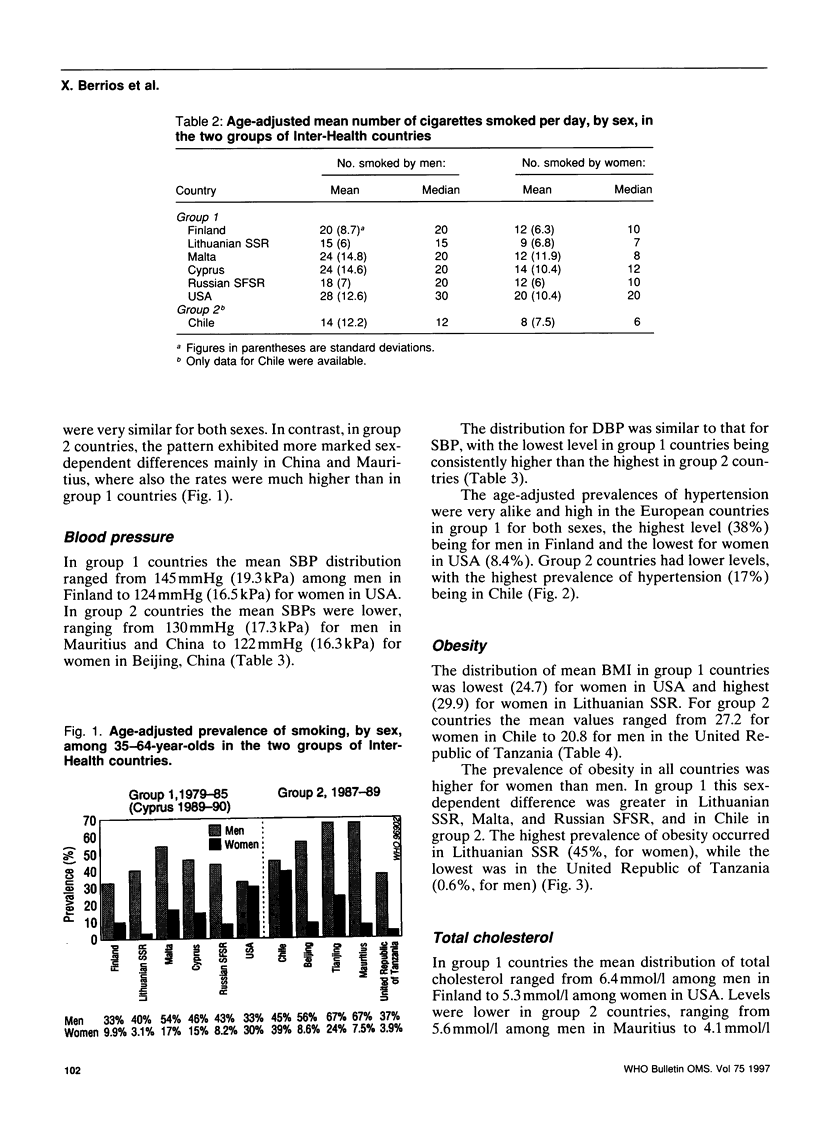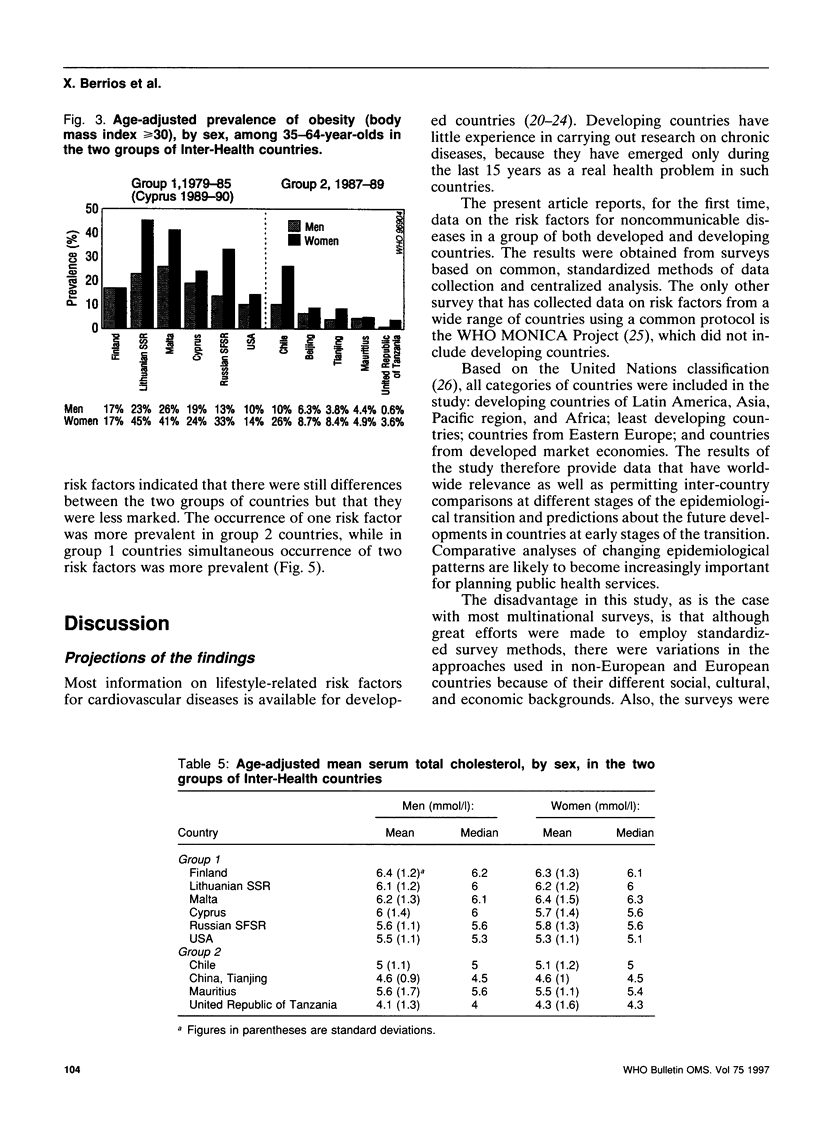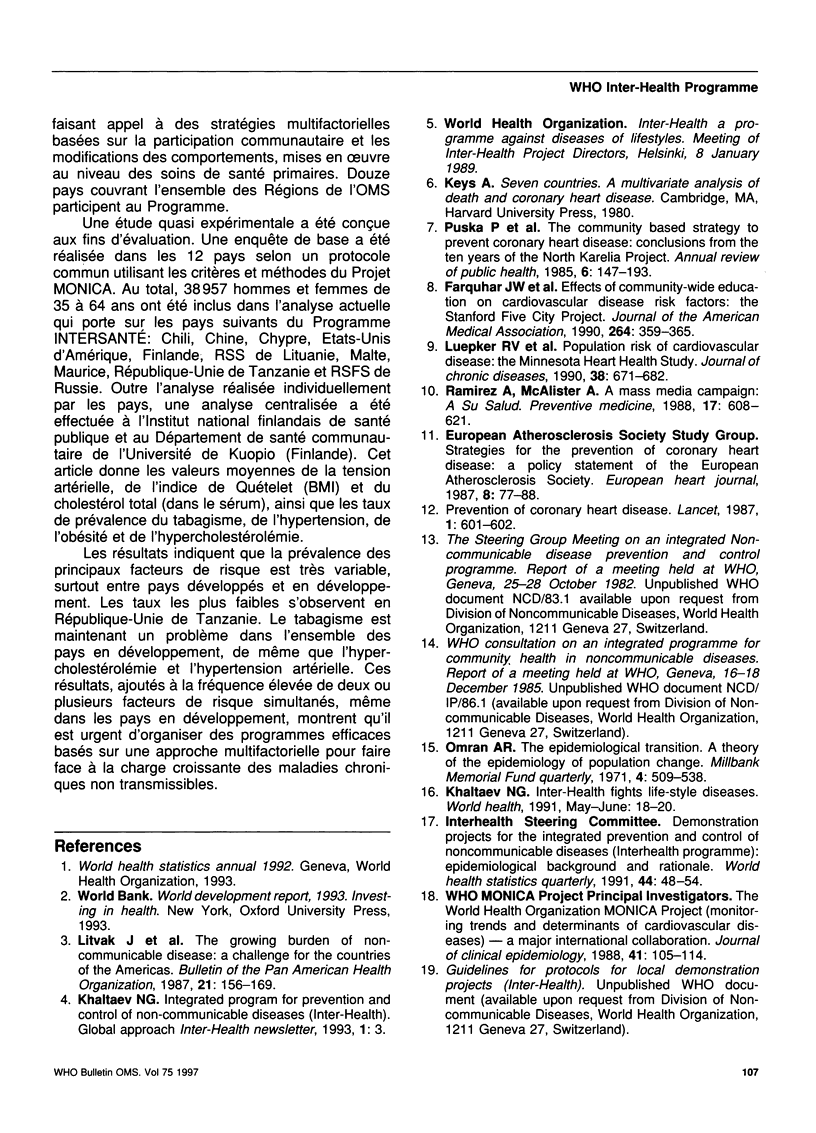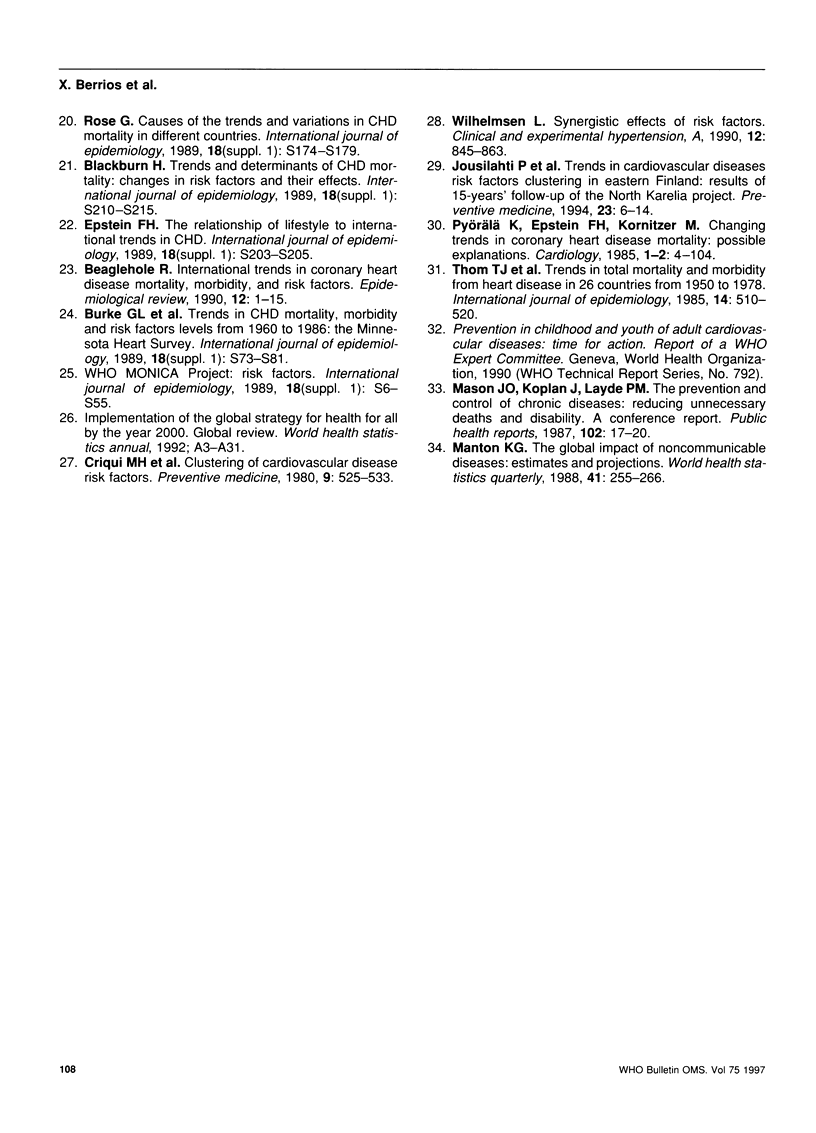Abstract
The Inter-Health Programme was launched in 1986 by WHO, with the collaboration of a coordination centre (National Public Health Institute, Finland) to control and prevent chronic noncommunicable diseases (CNCDs) among adults. Programmes for action were organized based on the concept that most major CNCDs share common risk factors and that those that are lifestyle related are modifiable through efficient interventions using multifactorial strategies involving community participation and behaviour changes carried out at the primary health care level. Twelve countries from all WHO Regions have joined the programme. A baseline survey was undertaken in all countries with a common protocol, following the criteria and methods employed in the MONICA Project. Altogether 36815 men and women aged 35-64 years were included in the present analysis from the following Inter-Health countries: Chile, China, Cyprus, Finland, Lithuanian SSR, Malta, Mauritius, Russian SFSR, United Republic of Tanzania, and USA. In addition to individual country analysis, centralized analysis was carried out at the Finnish National Public Health Institute and the Department of Community Health, Kuopio University, Finland. Reported here are the mean values of blood pressure, body mass index, and serum total cholesterol as well as specific prevalences of smoking, hypertension, obesity, and hypercholesterolaemia.
Full text
PDF









Selected References
These references are in PubMed. This may not be the complete list of references from this article.
- Beaglehole R. International trends in coronary heart disease mortality, morbidity, and risk factors. Epidemiol Rev. 1990;12:1–15. doi: 10.1093/oxfordjournals.epirev.a036048. [DOI] [PubMed] [Google Scholar]
- Blackburn H. Trends and determinants of CHD mortality: changes in risk factors and their effects. Int J Epidemiol. 1989;18(3 Suppl 1):S210–S215. [PubMed] [Google Scholar]
- Burke G. L., Sprafka J. M., Folsom A. R., Luepker R. V., Norsted S. W., Blackburn H. Trends in CHD mortality, morbidity and risk factor levels from 1960 to 1986: the Minnesota Heart Survey. Int J Epidemiol. 1989;18(3 Suppl 1):S73–S81. [PubMed] [Google Scholar]
- Criqui M. H., Barrett-Connor E., Holdbrook M. J., Austin M., Turner J. D. Clustering of cardiovascular disease risk factors. Prev Med. 1980 Jul;9(4):525–533. doi: 10.1016/0091-7435(80)90047-x. [DOI] [PubMed] [Google Scholar]
- Epstein F. H. The relationship of lifestyle to international trends in CHD. Int J Epidemiol. 1989;18(3 Suppl 1):S203–S209. [PubMed] [Google Scholar]
- Litvak J., Ruiz L., Restrepo H. E., McAlister A. The growing noncommunicable disease burden, a challenge for the countries of the Americas. Bull Pan Am Health Organ. 1987;21(2):156–171. [PubMed] [Google Scholar]
- Manton K. G. The global impact of noncommunicable diseases: estimates and projections. World Health Stat Q. 1988;41(3-4):255–266. [PubMed] [Google Scholar]
- Mason J. O., Koplan J. P., Layde P. M. The prevention and control of chronic diseases: reducing unnecessary deaths and disability--a conference report. Public Health Rep. 1987 Jan-Feb;102(1):17–20. [PMC free article] [PubMed] [Google Scholar]
- Omran A. R. The epidemiologic transition. A theory of the epidemiology of population change. Milbank Mem Fund Q. 1971 Oct;49(4):509–538. [PubMed] [Google Scholar]
- Ramirez A. G., McAlister A. L. Mass media campaign--A Su Salud. Prev Med. 1988 Sep;17(5):608–621. doi: 10.1016/0091-7435(88)90054-0. [DOI] [PubMed] [Google Scholar]
- Rose G. Causes of the trends and variations in CHD mortality in different countries. Int J Epidemiol. 1989;18(3 Suppl 1):S174–S179. [PubMed] [Google Scholar]
- Thom T. J., Epstein F. H., Feldman J. J., Leaverton P. E. Trends in total mortality and mortality from heart disease in 26 countries from 1950 to 1978. Int J Epidemiol. 1985 Dec;14(4):510–520. doi: 10.1093/ije/14.4.510. [DOI] [PubMed] [Google Scholar]
- Wilhelmsen L. Synergistic effects of risk factors. Clin Exp Hypertens A. 1990;12(5):845–863. doi: 10.3109/10641969009073504. [DOI] [PubMed] [Google Scholar]


